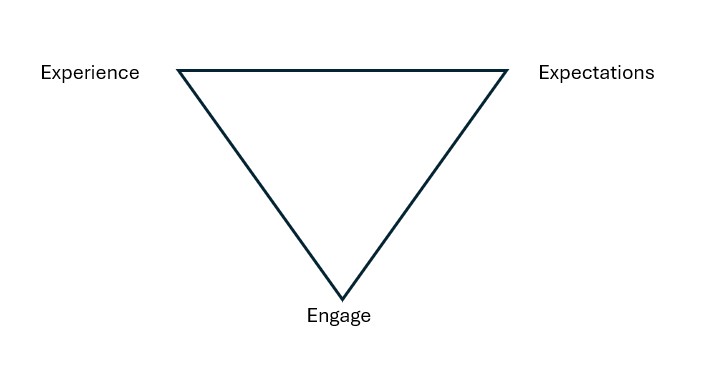Listen to this article. (Voice is AI-generated. Inconsistencies may occur.)
The ball rolls down the hill and gains speed – that’s momentum driven by gravity. You see it in sports and a hundred other places – including on teams – and like that ball rolling down the hill it is driven by invisible (yet powerful) forces.
Team momentum is a powerful and invisible force that drives a team in a positive or negative direction. It can propel a team to greater success, performance, or accelerate a downward spiral to disengagement, turnover and a variety of other problems. While invisible, it is incredibly important. And while momentum can be either positive or negative in direction, I will frame the rest of this article on positive momentum – the kind we truly want to build. As a leader, if we can understand the components of it, we can begin to plant the seeds and nurture positive team momentum.
The invisible force that drives this momentum is created by a positive feedback loop. Performance success leads to greater confidence, which in turn leads to improved performance. (Not unlike the Confidence/Competence Loop). But with a group of people or a team, there are other factors that can accelerate and accentuate this loop, including increased collaboration, mutual trust and greater positive energy.
What Leaders Can Do
There are three things you can do as a leader to help start and build team momentum.
- Realize the power. First and foremost, you must realize how important this momentum is. It can be like a force multiplier for your team and organization.
- Watch for the signs. Once you know you want to observe the signs of positive team momentum, you need to know what to look for.
- Consciously build the momentum. Apply the momentum triangle to perpetuate and speed up the momentum’s roll.
Let’s talk about each of these in more depth.
Realize the Power
Hopefully I have already convinced you of this power in team performance, but in case you need more convincing, team momentum can break inertia, create a psychological edge, and provide a quantifiable impact. Studies in sports have quantified momentum’s effect, showing that teams with early momentum (such as in the first quarter of a game) are more likely to win.
Watch for the Signs
Once you know momentum matters, it is important for you to know what to look for and what might start the ball rolling. The factors are as easy as ABC.
- Activities. Do you see the whole team, subsets, or individuals engaging in activities that can build energy, trust and productivity?
- Behaviors. Do you see behaviors that, when repeated, would create the upward path for momentum?
- Choices. Do you see the team making choices that positively reinforce energy, excitement and improvement?
Consciously Build Momentum
If you want to be a positive force for team momentum as a leader, to keep the energy going or speed it up, apply the Team Momentum Triangle.

Let’s look at each corner/component.
- Expectations. Our expectations as leaders matter a lot. Make sure your expectations align with the activities, behaviors and choices you want to see. While momentum can grow organically, as a leader, we can support and reinforce what is working. Often as the leader you can see that when the team itself cannot.
- Experience. Sometimes good things are happening, and while the team feels it, they aren’t consciously thinking about how this momentum started or what they can do to extend it. As a leader, you can recognize and call out the experience of the team – helping them see what they are experiencing. Once you help them make what they are experiencing more conscious, you can help them determine what they did to create energy, and what they can do (and you can help them with) to keep doing more of those activities and behaviors. When you help people make an experience conscious, you help them do more of what is working.
- Engage. Engage with the team, not to take over, but to enhance the energy and results they are experiencing. Encourage people to take more ownership and accountability for the team’s success and help them “spin” the positive feedback loop with each other. As the collaboration and energy grows, the momentum will be extended.
These aren’t just stand-alone activities for us as leaders. They triangulate to create greater results when you lean into all of them together. Consider the triumvirate of ideas as factors you do all of, rather than picking one. The more you promote and encourage each of these, the more you can positively impact team results and momentum.
Team momentum is real and powerful. As a leader, you can have a greater impact on it than you might have realized. Hopefully now you can see tangibly what you can do to support and build team momentum.


0 comments